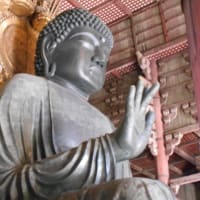
civilization and values
Chapter 1 Civilization
1 Idea type when thinking about civilization
I have continued to research civilizations and quasi-civilizations. In the study of civilization, I have mainly been thinking about the relationship between Toynbee's theory and civilization in terms of civilization and time. There was another character in the study of civilization. It's Spengler. I said that I would like to think about Spengler at a later date under the theme of civilization and values. Here we will think about civilization and values.
However, the translation of Spengler's "The Decline of the West" is difficult to understand (it must have been difficult to translate because the content is so diverse), and there are many things that are difficult for me, who is Japanese, to understand, including various issues in Arabic culture. It was too much. For this reason, I decided to set aside the ``decline of the West'' for the time being and, taking a hint from Spengler's perspective, explain the issue of civilization and values by selecting examples from Japanese cultural issues.
Now, before thinking about civilization and values, I would like to reconsider the concept of civilization. We have considered civilizations and quasi-civilizations, and the idea of these civilizations has been proposed in this series of research as a standard for classifying civilizations. Each of these concepts can be treated as what Weber called an ideal type * . By considering ideal types, it becomes possible to understand the appearance of each individual civilization (civilization, quasi-civilization) in more detail by comparing them with ideal types.
*Ideal type
Key concepts of Weber's social science methodology. Ideal type is a methodological concept. It has the meaning of a purely ideological limit concept, by which we measure reality and thereby articulate a certain meaningful part of the content of our experience.
2 4 civilizations and quasi-civilizations
When it comes to civilizations , it seems that they were not often categorized by type or style, just like looking at specimens. However, up until now, each has probably been talked about as vaguely self-evident. Of course, there were other classifications based on the characteristics of civilizations*1.
In this series of research has been the classification of civilizations according to general concepts. In a sense, I wanted to exhibit civilization as a specimen. The point is, how can we explain the individuality of each civilization? Can it be expressed more clearly by using general concepts? That was a big pillar of what I wanted to do.
Let's briefly review how civilizations are classified. First of all , it can be divided into two major groups based on its morphological characteristics .
These are the four "civilizations" and many other "quasi-civilizations . "
The four civilizations were classified according to two general concepts, and the quasi-civilizations were classified according to four general concepts.
*1 There was a time when civilizations were classified based on their individuality.
Toynbee's ``study of history'' introduced the concepts of civilization such as parent civilization, child civilization, stunted civilization, and miscarried civilization. In addition, the existence of 21 other civilized societies was proposed. However, it can be said that these 21 civilizations were classified not by general concepts but by their individuality. Civilizations are named by proper names, such as Egyptian civilization or Andean civilization. In other words, he has directly captured the individuality of the civilization he is observing. However, in that case, only one civilization exists, and there is no similarity between each civilization. This will not create empathy or relationships. Understanding and classifying civilizations in terms of general concepts rather than unique individualities is the first step in building empathy and relationships. In other words , it can be said to be an attempt to categorize civilizations using a method similar to Jung's typology.
*2 Morphological
In Spengler's ``The Decline of the West,'' the idea of viewing civilization as a form emerged. However, it can be said that this is not the form of a solid, but rather the change of a solid over time as a form.
With this in mind, at the very beginning of the classification, we roughly divided civilization and quasi-civilization. I did this because I believe that there will be differences in the way they develop in form.
Whether a ``civilization'' develops or declines, it will continue to influence smaller civilizations around it. In contrast, "quasi-civilizations" will continue to have their own moral systems, but will continue to be heavily influenced by "civilizations." At the center of this influence is the ``moral system'' of ``civilization,'' and depending on whether this is broad or narrow, we can call it civilization or quasi-civilization. Therefore, the equation `` civilization '' = ``moral system = religion'' can be said to be the central theme of civilization theory.
all rights reserved to M Ariake


























※コメント投稿者のブログIDはブログ作成者のみに通知されます